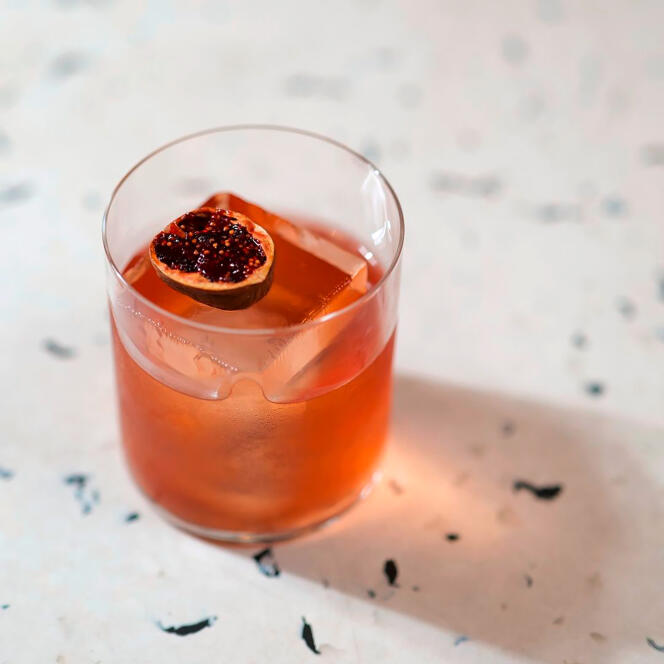


Most often, a cocktail's garnish consists of a twist of citrus peel, placed delicately on top of the beverage after it has been squeezed over the lip of the glass. This adds freshness and highlights the top notes of the blend: Orange for an old fashioned, or lemon in a gin & tonic. Sometimes, it's an infused ingredient, that acts as a lingering memory when it is enjoyed after the drink is drunk: The amarena cherry in a Manhattan, or the olive in a dry martini.
Usually, this cocktail garnish only serves to set the scene, but nowadays it plays a starring role, especially when it's made from the leftovers of an ingredient used in the cocktail recipe. Just like with the "Tomato" at Little Red Door (in Paris' 3rd arrondissement): A creation based on permaculture-grown tomatoes, which have been macerated to create an apéritif. The leftover fruit is used to make a crispy tuile (wafer) that serves as a decorative element, accentuating the umami aspect of the cocktail when it is savoured.
The Les Ambassadeurs bar, at the Hotel Crillon (Paris 8th), served the "Butternut" – on the menu last winter – as imagined by bar manager Kevin Rigault: Blending together a single malt, a spiced syrup and the famous squash with its hints of hazelnut, which has been vacuum-cooked and pureed with milk. Pieces of butternut were collected and dehydrated to make small tuiles, which were used to dress up the cocktail.
For the CalvaClub competition in December, bartender Jeanne Voignier (of the Tempête bar, in the southern city of Toulouse) created a revisited old fashioned: A VSOP calvados paired with an oloroso sherry wine, a fig kôso (Japanese fermented syrup) and toasted walnut bitters. For the garnish, she reused a lacto-fermented fig, placed in a walnut half-shell representing a tiny boat – both ingenious and delicious.
Translation of an original article published in French on lemonde.fr; the publisher may only be liable for the French version.
